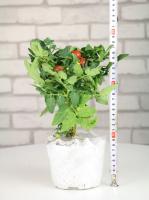Can Squash be Planted by Tomatoes? Exploring Companion Planting
Companion planting is a popular gardening practice that involves planting different crops close to each other in order to benefit from their mutual advantages. This practice has been around for centuries, but it has gained more attention in recent times due to its potential ability to help with pest control, soil improvement, and increased crop yields.
The Benefits of Companion Planting
One of the primary benefits of companion planting is pest control. By planting certain crops together, you can create an environment that is less favorable to pests, reducing the likelihood of an infestation. For example, tomatoes and basil are often planted together, as the scent and oils from the basil can help repel tomato hornworms.
Another benefit of companion planting is soil improvement. Some plants are known to have significant benefits for soil health. For example, legumes like beans and peas have nitrogen-fixing bacteria that can convert nitrogen from the air into a form that plants can use, improving soil fertility.
Finally, companion planting can help increase crop yields. By planting certain crops together, you can create a symbiotic relationship that benefits both plants. For example, squash and beans are often planted together. The beans can provide a natural trellis for the squash to climb, while the squash can provide shade and moisture for the beans, allowing them to thrive.
Can Squash be Planted with Tomatoes?
So, can squash be planted with tomatoes? The short answer is yes. In fact, many gardeners have had success planting squash and tomatoes together.
There are a few things to keep in mind, however. First, squash and tomatoes have different growing habits, so they may need different amounts of space and nutrients. Squash is a sprawling plant that can take up a lot of room, while tomatoes are more compact. You will need to plan your garden accordingly to ensure that each plant has the space it needs to grow.
In addition, be mindful of the types of squash and tomatoes you choose to plant together. Some varieties may not be compatible, so be sure to research which varieties work well together.
The Benefits of Planting Squash with Tomatoes
Planting squash with tomatoes can have several benefits. For one, the squash can help provide shade and moisture for the tomatoes, which can be particularly beneficial in hot and dry climates. In addition, the squash can help prevent weeds from growing around the tomatoes, as its large leaves can shade out the area around the base of the plants.
Another benefit of planting squash with tomatoes is that it can help with pest control. Squash plants are known to repel pests like squash bugs and cucumber beetles, which can be a problem for tomato plants. By planting squash nearby, you may be able to reduce the risk of an infestation.
Tips for Planting Squash with Tomatoes
If you decide to try planting squash with tomatoes, here are a few tips to keep in mind:
Choose compatible varieties of squash and tomatoes.
Plant the squash at the base of the tomato plants, giving them enough space to grow.
Provide support for the tomato plants, as the presence of the squash vines can make it difficult to stake the tomatoes.
Water and fertilize both plants as needed, taking care not to overwater or over-fertilize.
By following these tips, you can give your squash and tomato plants the best chance of thriving together.
In Conclusion
Companion planting is a fascinating and effective gardening practice that can help you get the most out of your crops. By planting squash with tomatoes, you can enjoy the benefits of increased pest control, soil improvement, and crop yield. Just be sure to choose compatible varieties and give each plant the space and nutrients it needs to thrive.

 how many times do yo...
how many times do yo... how many planted tre...
how many planted tre... how many pine trees ...
how many pine trees ... how many pecan trees...
how many pecan trees... how many plants comp...
how many plants comp... how many plants can ...
how many plants can ... how many plants and ...
how many plants and ... how many pepper plan...
how many pepper plan...
































